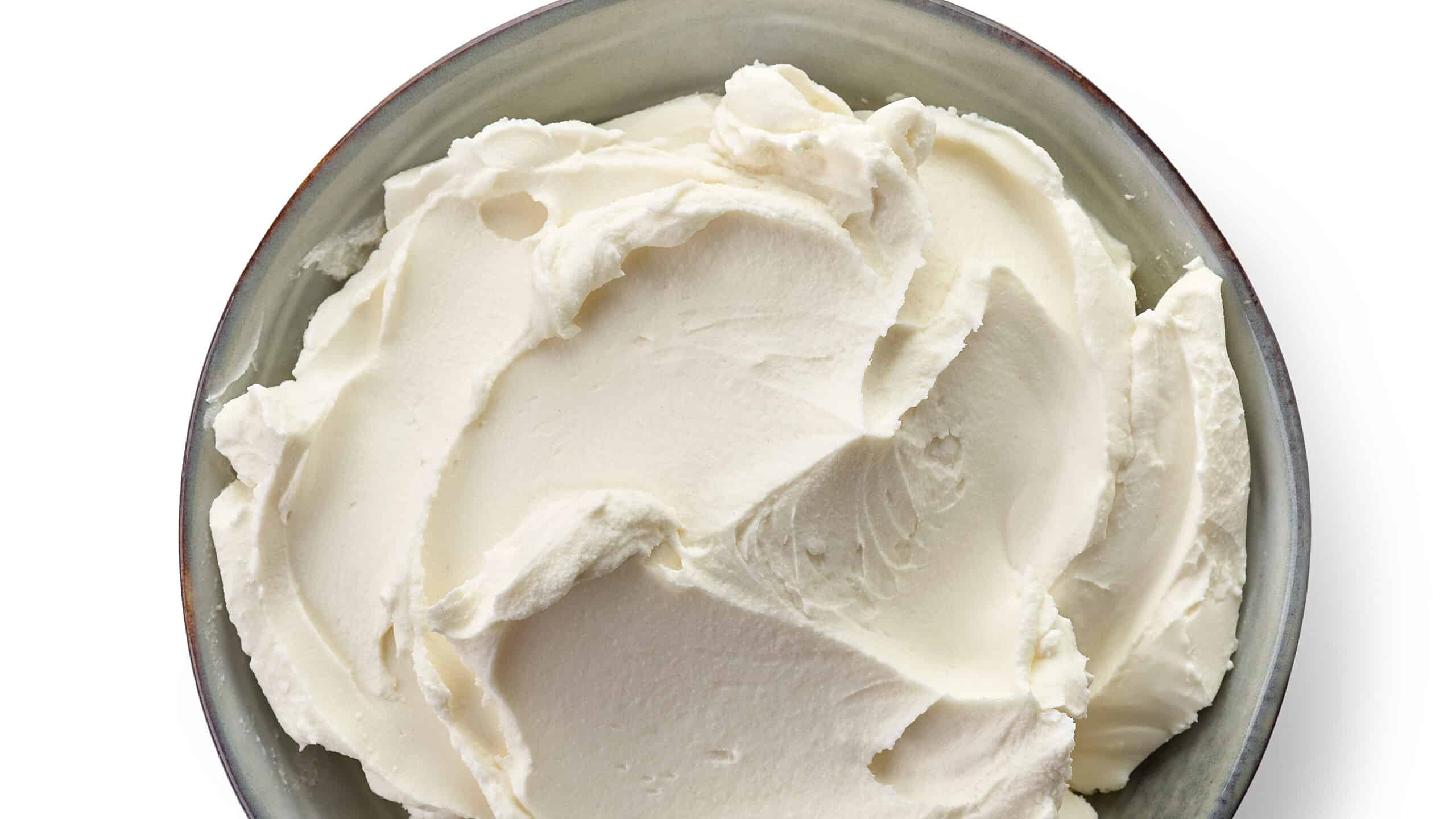Fruit and taco dips, hashbrown casserole, and cheesecake are deliciously tempting ways to eat cream cheese. The versatility of cream cheese is partly due to its mild flavor. You may be pleasantly (or not so pleasantly) surprised at how many recipes call for cream cheese! There is an array of methods to enjoy this block of tastiness. With its versatility and unique flavor, you may wonder, is cream cheese healthy?
This dairy spread is excellent for bagels, crackers, or putting into side dishes and dips. There are also many flavors of cream cheese, like strawberry and cinnamon, adding to this spread's versatility effect.
Cream cheese does have health benefits that include vitamins like A and antioxidants that are important for our overall health. However, there are also some downsides to using cream cheese, one of which includes its incredibly short shelf life. Let's dive deep into the age-old question of whether or not cream cheese is healthy.

Cream cheese is a delicious dessert additive. Many people enjoy eating it on bread like toast, waffles, and even pancakes. Others love to add it to cakes and fruit dips. There are so many ways to enjoy the versatility of cream cheese!
©Yulia Davidovich/Shutterstock.com
What is Cream Cheese?
Cream cheese is a block of soft cheese. It has a very smooth texture and is very versatile.
One reason that cream cheese is so versatile is its mild flavor. It can adapt to various ingredients and foods, making it perfect for soups, dips, casseroles, and more!
Cream cheese has a few nutrients that can benefit our overall health; these include vitamin A and riboflavin, which is vitamin B2. Additionally, cream cheese contains antioxidants. If you are unsure what antioxidants are, they protect your cells from free radicals that will otherwise damage them. Along with the health benefits come a few downsides. There is not a ton of nutritional value in cream cheese, and it also contains high fat. Let's take a deeper look at cream cheese's health benefits and downsides.
Health Benefits of Cream Cheese
Although many see cream cheese as a decadent dessert additive that doesn't necessarily carry many benefits, there are a few ways that cream cheese can benefit our overall health.
- High in calcium: cream cheese contains calcium, which benefits our bones. When our diets contain high levels of calcium, it promotes strong bones. This is especially beneficial as we age.
- Contains vitamin A: One of the nutrients that cream cheese contains is vitamin A. Vitamin A can protect our immune health and also benefit eye health.
- It doesn't contain much lactose: Many dairy products contain lactose, including cheese and yogurt. This sugar can be difficult for some people to digest and can cause lactose intolerance. This intolerance can be difficult for overall health because it causes digestive issues with unwanted symptoms like belly pain and gas. Cream cheese, however, contains low lactose, which may be better tolerated.
- May benefit gut health: Cream cheese may also benefit gut health by acting as a probiotic. It contains a starter culture. These strains may benefit the gut by introducing good bacteria, which improves its overall health.
- It doesn't have a ton of carbohydrates: There are two grams of carbohydrates in one ounce of cream cheese. High consumption of carbohydrates can have adverse effects on overall health.
- It has antioxidants, which we need: Antioxidants are very beneficial to our overall health. Our cells are susceptible to damage; however, antioxidants can protect cells from free radicals that otherwise may result in damage.
- Naturally gluten-free: Cream cheese is naturally gluten-free, making it an ideal option for those who cannot tolerate gluten in their diet.

Fruit dip is a popular way to enjoy cream cheese. There are many different types of fruit dip recipes to try today!
©Elena Shashkina/Shutterstock.com
Negative Impacts of Cream Cheese
Like many foods, using cream cheese has some negative impacts or downsides.
- It is high in fat: Cream cheese is high in fat. In one ounce of cream cheese, there are 10 grams of fat. High-fat diets may increase LDL cholesterol and risks of heart disease.
- It doesn't contain much protein: Protein is very important for overall health. It can promote the feeling of fullness. However, even more, it benefits overall strength. Cream cheese contains very little protein, meaning it is not a good source of protein like other cheeses.
- Has a short shelf life: A short shelf life means when bought, cream cheese needs to be used more quickly. Otherwise, the chances of it going bad are higher.
- Cream cheese is highly processed: Cream cheese goes through many processing methods. These processes include pasteurization, adding lactic acid bacteria, clotting enzymes, and more. If one is avoiding processed foods, bypassing cream cheese may be beneficial.
Delicious Ways to Enjoy This Spread
One of the favorite ways to enjoy cream cheese is by spreading it on a bagel. This adds flavor as well as a creamy texture.
More ways to enjoy cream cheese include:
- Create a fruit dip for berries, apples, pineapples, mangos and more.
- Make a taco dip for chips.
- Cream cheese is dense, making it a simple way to thicken sauces and soups.
- Use to make cakes like cheesecakes and cupcakes.
- Cream cheese is often used to make homemade macaroni and cheese.
- Stuff chicken or turkey breasts with cream cheese for a unique favor.
- Spread the cream cheese inside of a wrap.
- There are a variety of cheese ball recipes that use cream cheese as the main ingredient.
- Putting cream cheese in mashed potatoes will elevate the taste and creaminess.
These are only a few different ways to use a cream cheese block. It is very versatile and has many different uses!

If your child loves cream cheese, try one of the flavored ones, such as cinnamon or strawberry. You never know; you may find their new favorite flavor!
©Maja Marjanovic/Shutterstock.com
Key Takeaways
When it comes to cream cheese, people either enjoy it as a dessert additive or a delicious spread that can help maintain a low-fat diet.
- Cream cheese is high in fat but low in protein and carbohydrates.
- It can benefit the eye and gut health.
- Cream cheese is also low in lactose and is naturally gluten-free.
- Cream cheese spread has a short shelf life.
- There are antioxidants in cream cheese, benefiting overall cell health.
- Cream cheese undergoes numerous steps of processing.
So, Is Cream Cheese Healthy?
Cream cheese can be a healthier alternative to spreads like butter. This is because it has a relatively lower amount of calories and fat than butter. However, it still has a decent amount of calories and fat. Looking at one ounce of cream cheese, there are 99 calories and 10 grams of fat.
Cream cheese is low in protein and carbohydrates. However, it does have essential nutrients such as calcium and vitamin A, which will benefit eye and gut health. Yet, it is a processed food that some people avoid in their overall diets. So, the question remains: is cream cheese healthy? The answer is, well, it depends.
Recipes That Use Cream Cheese
- Taco Dip Recipe
- Ham & Ranch Potatoes Recipe
- No-Bake Cheesecake Recipe
- Fruit Dip
- Seven Layer Mexican Dip Recipe
- Crab Dip-Stuffed Mushrooms Recipe
- Bacon Wrapped Jalapeno Poppers Recipe
The image featured at the top of this post is ©MaraZe/Shutterstock.com
